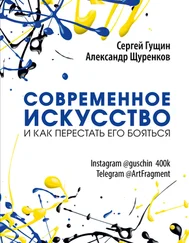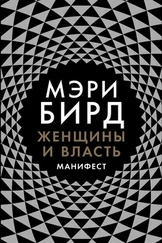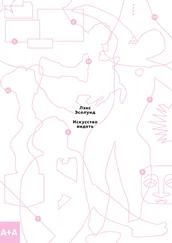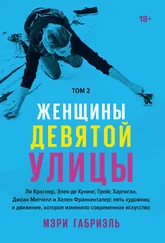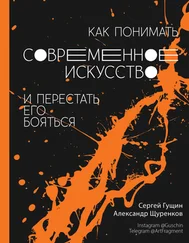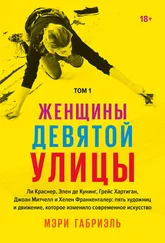Elaine de Kooning and Slivka, Elaine de Kooning, 229 ; Elaine de Kooning, interview by John Gruen, AAA-SI, 11; Zinn, A People’s History, 384.
Willem de Kooning, interview by Anne Bowen Parsons, AAA-SI.
Marshall Berman, All That Is Solid Melts into Air , 303.
«Fiorello LaGuardia, 1882–1947», jewishvirtuallibrary.org/fiorello-laguardia.
Leighton, The Aspirin Age , 438–443.
Clements, Prosperity, Depression and the New Deal , 194–96; John Patrick Diggins, The Proud Decades , 158. О нацистской угрозе не просто сообщали в СМИ, но и рассказывали в художественных фильмах. Вторая мировая война была первым в истории человечества вооруженным конфликтом, который стал темой для кинолент, еще не закончившись.
Munro, Originals , 253.
Глава 6. Художники-беглецы
Albert Camus, Exile and the Kingdom , 103.
Edgar, Club Without Walls , 39–40; Virginia Pitts Rembert, «Mondrian, America, and American Painting», vi.
Parrish, Anxious Decades, 463; Gilbert, The Second World War , 60–61, 67–68, 77, 83, 85–86, 90–91.
Gilbert, The Second World War , 94, 97, 101–2, 105, 108.
Harold Rosenberg, «The Fall of Paris», 440–441.
Parrish, Anxious Decades , 465.
Gilbert, The Second World War , 94, 111, 116, 123, 134, 153.
Oral history interview with history interview with Margaret Scolari Barr, AAA-SI; Marquis, Alfred H. Barr, Jr. , 104, 106, 108, 153.
Marquis, Alfred H. Barr, Jr. , 177, 182, 185–87; Lynes, Good Old Modern , 226, 231.
Oral history interview with history interview with Margaret Scolari Barr, AAA-SI.
Lynes, Good Old Modern , 226, 231; oral history interview with history interview with Dorothy C. Miller, AAA-SI; oral history interview with history interview with Margaret Scolari Barr, AAA-SI; Jackman and Borden, The Muses Flee Hitler, 81.
Oral history interview with history interview with Rebecca Reis, AAA-SI; Anton Gill, Art Lover , 241–243; Jackman and Borden, The Muses Flee Hitler , 81, 83; Marquis, Alfred H. Barr, Jr. , 185–87; Lynes, Good Old Modern , 231; «The 194 °Census: Employment and Income», National Archives, www.archives.gov.
Jackman and Borden, The Muses Flee Hitler , 50, 54, 80; Lynes, Good Old Modern , 231–232. Данные об иммиграции в США показывают, что из общего числа иммигрантов, въехавших в страну из Европы в период с 1933 по 1941 г. (132 тыс. человек), 702 были художниками и скульпторами.
Frank O’Hara, Robert Motherwell , 9; Alfred Leslie, interview by Jack Taylor.
Harry Holtzman, interview by Jack Taylor; oral history interview with history interview with George L. K. Morris, AAA-SI.
Rembert, «Mondrian», 44; Harry Holtzman, interview by Jack Taylor.
May Tabak Rosenberg, interview by Jeffrey Potter, courtesy PKHSC; Levin, Lee Krasner , 138, 141–142; Rose, Lee Krasner , 45.
Levin, Lee Krasner , 127; Landau, Lee Krasner: A Catalogue Raisonné , 59.
Rembert, «Mondrian», 45; Landau et al., Mercedes Matter , 33, 68n63.
Sandler, A Sweeper Up After Artists , 51.
Landau et al., Mercedes Matter , 13, 34; Goodman, Hans Hofmann , 31.
John O’Brian, ed., Clement Greenberg: The Collected Essays and Criticism , vol. 1, Perceptions and Judgments, 1939–1944, 188.
Mercedes Matter , interview by Sigmund Koch, Tape 4A, Aesthetics Research Archive; oral history interview with history interview with Nell Blaine, AAA-SI.
Rembert, «Mondrian», 78; Gill, Art Lover, 282; O’Brian, Clement Greenberg: The Collected Essays and Criticism , 1:189.
Hall and Wykes, Anecdotes of Modern Art , 72; Rembert, «Mondrian», 78n75–76.
Ilya Bolotowsky and Henry Geldzahler, «Adventures with Bolotowsky», 25; Rembert, «Mondrian», 45–46; Levin, Lee Krasner , 151; oral history interview with history interview with George L. K. Morris, AAA-SI.
Lee Krasner, interview by Barbaralee Diamonstein, provided by Dr Barbaralee Diamonstein-Spielvogel, interviewer and author, from Inside New York’s Art World , 199–200.
David W. Stowe, «The Politics of Cafe Society», 1384, 1387.
Lee Krasner, interview by Barbaralee Diamonstein, provided by Dr. Barbaralee Diamonstein-Spielvogel, interviewer and author, from Inside New York’s Art World , 200; Rose, Lee Krasner , 40; Rembert, «Mondrian», 78n75–76.
Lee Krasner , interview by Barbara Novak, videotape courtesy of courtesy PKHSC.
Hobbs, Lee Krasner (1999), 29.
Rembert, «Mondrian», 46.
Oral history interview with history interview with Lee Krasner, November 2, 1964–April 11, 1968, AAA-SI.
Dewey, Art as Experience , 56–57; Martica Sawin, Nell Blaine , 20.
Oral history interview with history interview with Lee Krasner, November 2, 1964–April 11, 1968, AAA-SI.
Landau, Lee Krasner: A Catalogue Raisonné , 76; Landau, «Lee Krasner’s Early Career, Part One», 16.
Rembert, «Mondrian», 78n75–76.
Landau, Jackson Pollock , 86; It Is 3 (Winter — Spring 1959): 10; Landau, «Krasner’s Past Continuous», 71. Гофман однажды сказал: «Видеть без осознания… это почти слепота. „Видеть“ и осознавать — это визуальный опыт, искусство. Нам нужно научиться видеть».
Landau, Lee Krasner: A Catalogue Raisonné , 306; Lee Krasner, interview by Ellen G. Landau, AAA-SI; Naifeh and Smith, Jackson Pollock , 391; Levin, Lee Krasner , 164; Rose, Lee Krasner , 45.
Читать дальше
Конец ознакомительного отрывка
Купить книгу
![Мэри Габриэль Женщины Девятой улицы. Том 1 [Ли Краснер, Элен де Кунинг, Грейс Хартиган, Джоан Митчелл и Хелен Франкенталер: пять художниц и движение, изменившее современное искусство] обложка книги](/books/397801/meri-gabriel-zhenchiny-devyatoj-ulicy-tom-1-li-kra-cover.webp)




